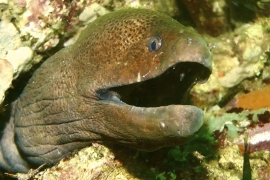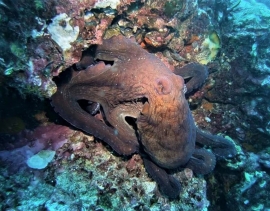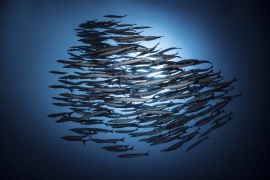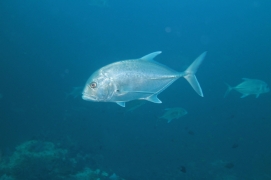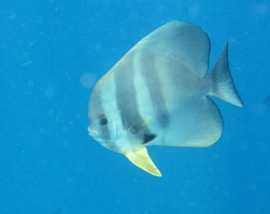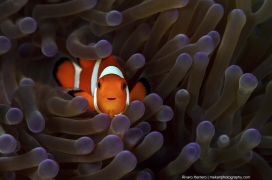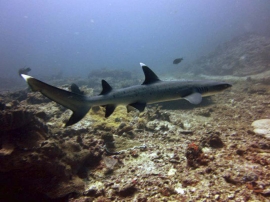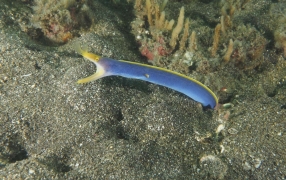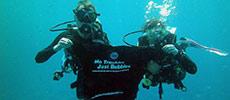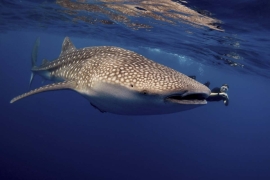
Lembeh Liveboard Diving
Lembeh is one of the northernmost islands in Indonesia. It is located just 500km south of The Philippines, at the tip of North Sulawesi. Lembeh itself is a small island, just 12km in length, but most of the famous ‘Lembeh diving’ takes place in the narrow strait between Lembeh Island and Sulawesi's coastal town of Bitung.
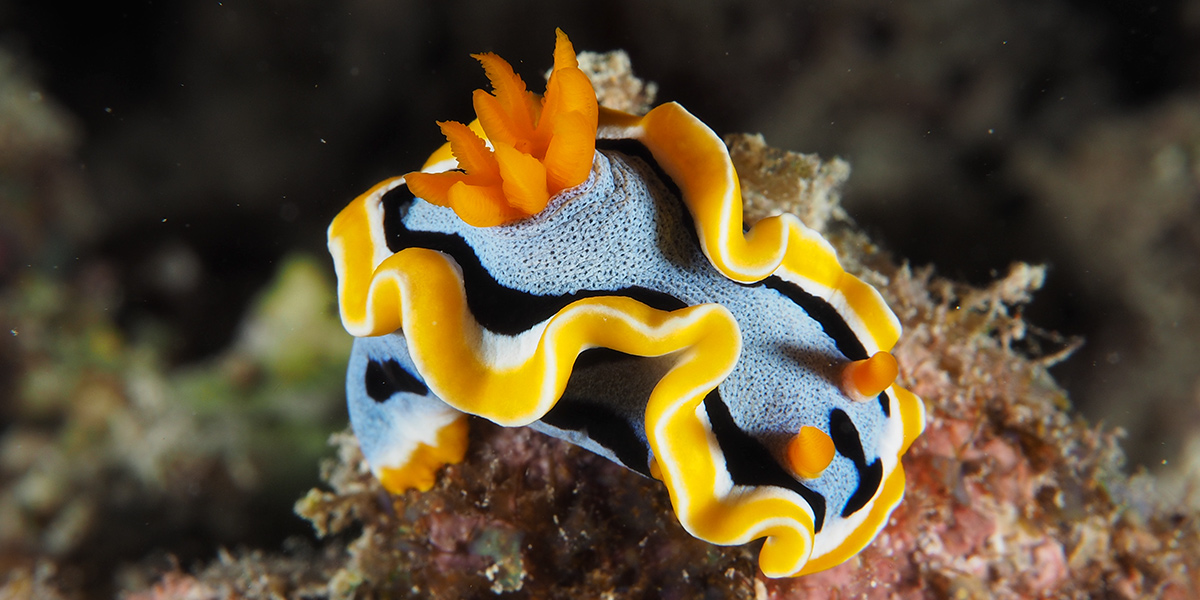
This is Lembeh Strait and considered by many as the best place in the world for muck diving. This can be done by day-trip diving boat, or more leisurely on a liveaboard diving cruise. The Lembeh Strait is often referred to as the Mecca for underwater macro photography, mainly due to the wonderfully-diverse marine life, including tiny fish & invertebrates which don’t live anywhere else in the world. These include a wide range of species of seahorses & nudibranchs. In addition, Wonderpus, Flambouyant Cuttlefish, Blue Ringed Octopus, Mimic Octopus and Hairy Frogfish are just a few of the amazing species that can be found at Lembeh Strait. And many more special species call Lembeh Strait their home.
In and near to the strait there are some nice coral reefs, and a few wrecks to see when on your liveaboard diving trip. But nearly everyone comes here to enjoy the muck diving. Many of the areas for muck diving appear to be dull and dirty sandy slopes, with nothing to see and even human rubbish littering the seabed. But spend some time to adjust your eyes, and carefully watch your Divemaster guide and you will soon see that this place has incredible diversity in its marine life. Nutrient-rich water flows through the strait, but not so fast as to cause strong currents. Surface waves are also not usually a problem because the island offers protection from the ocean's winds. And with many areas covered in black or grey sand that is rich in nutrients and minerals, and it's easy to understand why there's so much life here. But you have to pay attention, look carefully and be patient!
Lembeh Strait has more than 70 named dive sites, some secret ones, and plenty that haven't been fully explored or even discovered yet.
Police Pier
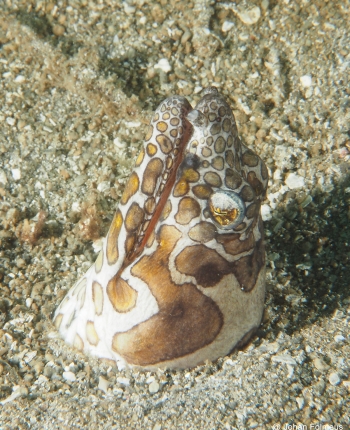 A Napoleon Snake Eel - Credit: Johan FolmeusIs popular for night dives and you can see all kinds of things here including Snake Eels, Scorpionfish, Cardinalfish and lots of crustaceans, including some special crab species. It's on the western shore, halfway down The Strait.
A Napoleon Snake Eel - Credit: Johan FolmeusIs popular for night dives and you can see all kinds of things here including Snake Eels, Scorpionfish, Cardinalfish and lots of crustaceans, including some special crab species. It's on the western shore, halfway down The Strait.
Nudi Falls
A wall dive next door to Police Pier, to the north. Lots of nudibranchs can be found here, near to the shore. Ribbon Eels are also commonly seen. Some claim that the name of the dive site comes from the bubbles of so many divers causing nudibranchs to fall off the wall's corals, although this is open for debate.
Nudi Retreat
A very popular sloping reef on the west side of The Strait, in the northern area. In addition to the wide range of nudibranchs to see here, there's some good coral coverage, with anemones and resident Anemonefish. Look out for a Pygmy Seahorse. Divers claim that this is among the best places to find a Blue-Ringed Octopus.
Teluk Kambahu 1-3
Are three 'local dive sites' which have a vast array of marine life, including lots of bony fish species found nowhere else.
California Dreaming
Is on the eastern shore quite far north, and sometimes during low season isn't possible to dive due to surface waves.
Angel Window
This is a coral-covered pinnacle that has two peaks and has lots of colourful life, including bony fish, mollusks and nudibranchs. It got its name from the swim-through in the deeper part of the dive site.
Aer Perang
Is maybe your best chance to see some rare cephalopods, including the Mimic Octopus, and possibly a Wonderpus.
Hairball
An excellent area of several dive sites for seahorses and frogfishes during the day, and cephalopods at night. It's located on the western shore, at the northern end.
Jahir
A recently-explored dive site that has good enough visibility to descend to 30 metres during the day and maybe not notice it. It's also often dived at night.
Makawide
This is three dive sites in the middle of the channel between a couple of large boulders which break the surface and give protection from and waves or current. The name comes from that of a local village.
Malawi Wreck
This is a 60 metre Japanese WWII cargo ship that lies on its port side at 14-32 metres, depending on the tide and which part of the wreck you're at. Due to the length of time it has been here, it's nicely covered in corals & anemones and attracts lots of life. It is in the wider area of The Strait, slightly nearer to the eastern shore and a little south.
Pantai Parigi
On the eastern shore of The Strait, this dive site has much lighter sand than most others in the area. Blue-Ringed Octopuses are often seen here by eagle-eyed divers.
Goby the/a Crab
Is a dive site at the southern end of The Strait where it narrows. As its name suggests, expect to see gobies and crabs here. Coral coverage is good and visibility is usually better than at other dive sites further north.
Other dive sites include
& more!
When diving at Lembeh Strait and other similar muck diving sites around the world, it's important to remember a few things.
- Scuba dives are often not limited by time, but you should never go into Deco.
- Because dive times may not be limited and you're in shallow water, it's easy to stay submerged for more than an hour, four times per day. Wear sufficient protection, such as a full-length wetsuit.
- Another good reason for a full-length wetsuit is to offer some protection from accidental touching of the reef, human litter, or even a creature hiding in the sand that you didn't notice.
- Many scuba dive operators do not allow divers to wear gloves.
- Do not touch any living creature, especially just so that you can get a better photograph of it!
- Watch your buoyancy to avoid kicking up silt and ruining visibility for everyone around.
- Inhale to rise away from the seabed, instead of pushing or kicking yourself away.
- Be patient of other divers who may be photographing a creature, and be aware of other scuba divers waiting for you to take photographs.
- Share your critter finds with other divers, even from other boats. Karma says that the same will happen to you one day!
- Think about the fish who may spend their whole day being photographed. So don't flash your camera 100 times per dive. Be selective, not like a paparazzi!
Conditions at Lembeh
When to dive at Lembeh
You can dive at Lembeh all year round. The area's 'low season' is December to February, which is when more rain falls, but good diving is still possible at these times. In fact, some people choose to go in low season to avoid crowded dive sites and get the best deals on resorts.
What type of dive site is Lembeh
Nearly every diver comes to Lembeh to dive the sandy slopes looking for critters and special macro species. While muck diving is the main attraction here, there are a few wrecks, reefs and wide-angle opportunities.
Where is Lembeh?
Lembeh is an island, located at the northern tip of Sulawesi Island. Most people refer to diving in Lembeh as diving in Lembeh Strait, which is a narrow channel between Lembeh Island and Sualwesi Island's northern town, Bitung. Manado, which has an airport, is just 40 kilometres from Lembeh.
How to get to Lembeh
Firstly you need to arrive in this part of the world. Manado is the nearest airport to Lembeh, and has several flights landing every day. Due to there being several domestic airlines, competition has brought the prices down. The airport is 20km from Bitung, the nearest port to Lembeh Island. Roads are narrow and winding, so travel takes longer than you may expect.
Once in Lembeh or Bitung, you can join short day trips to the dive sites. Liveabaord diving in Lembeh is excellent. This way you can be the first to jump in at the more-popular dive sites, and easily get in four great dives per day.
Who can dive at Lembeh
All levels of scuba diver can enjoy diving at Lembeh because the dive sites are generally shallow, with little or no current and a calm surface. But due to the type of diving, it's vital to have very good buoyancy to avoid kicking up silt and ruining everyone's visibility.
What marine life can you see at Lembeh?
Although our list of potential marine life shows some large species, you are most likely to come to Lembeh to find critters. These include all kinds of bony fish and invertebrates, some are found nowhere else on earth. Nudibranchs, cuttlefish and small bony fish camouflaging in their surroundings are the most popular types of marine life for divers in Lembeh.
Summary of Lembeh
Scuba diving in Lembeh is mainly about macro & muck diving. There are some nice reefs and a few wrecks, but nearly everyone comes in the hope of finding something special hiding in the sand. It takes quite a commitment to get here, because you first need to land at Manado Airport in the far north of Sulawesi Island, not far from the southern Philippines. Day trips are possible, and any level of diver can join, but we advise liveaboard cruises and you having at least 50 logged dives.

